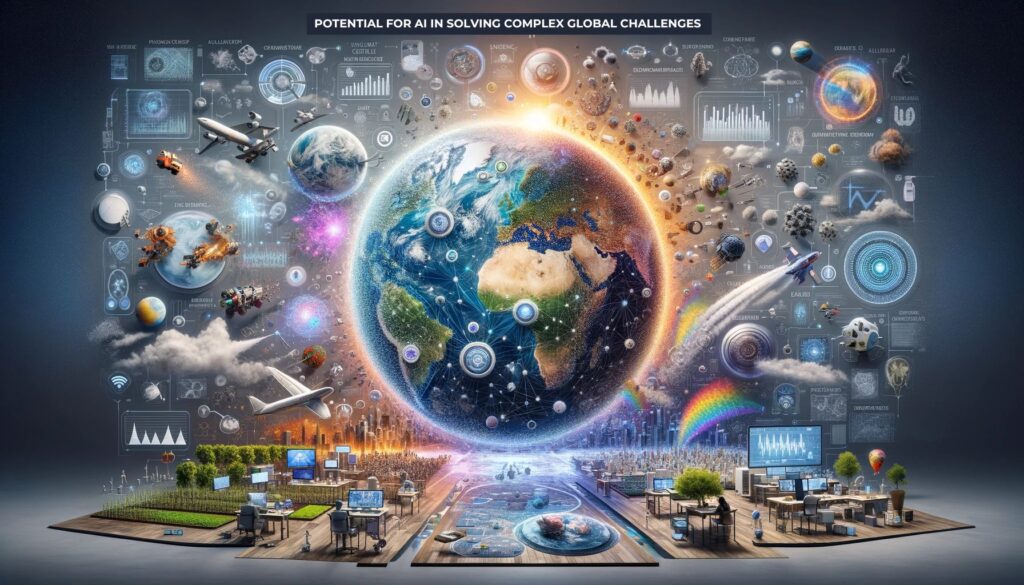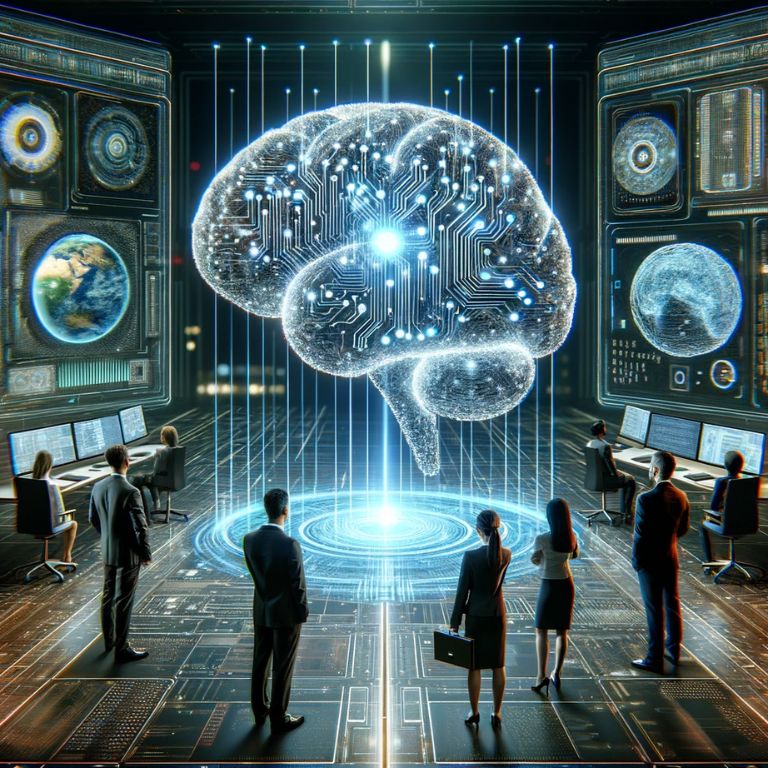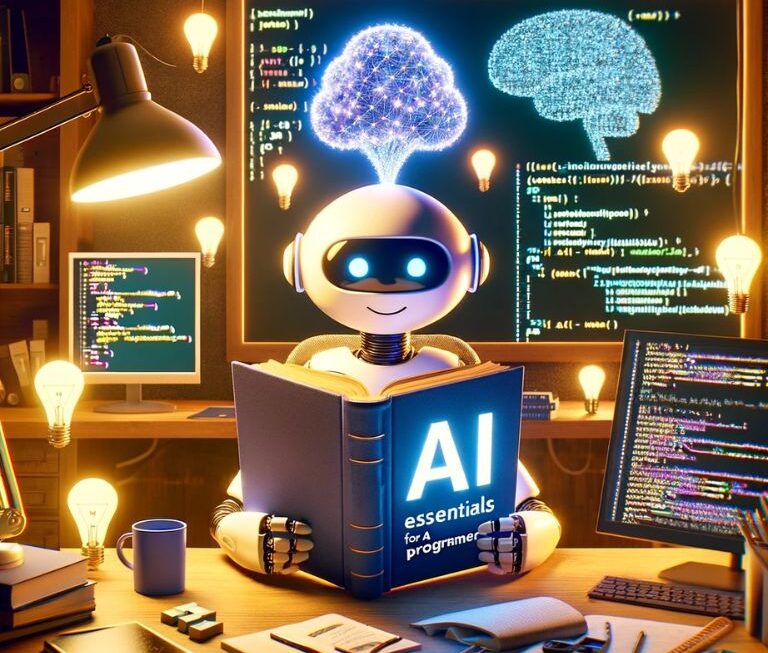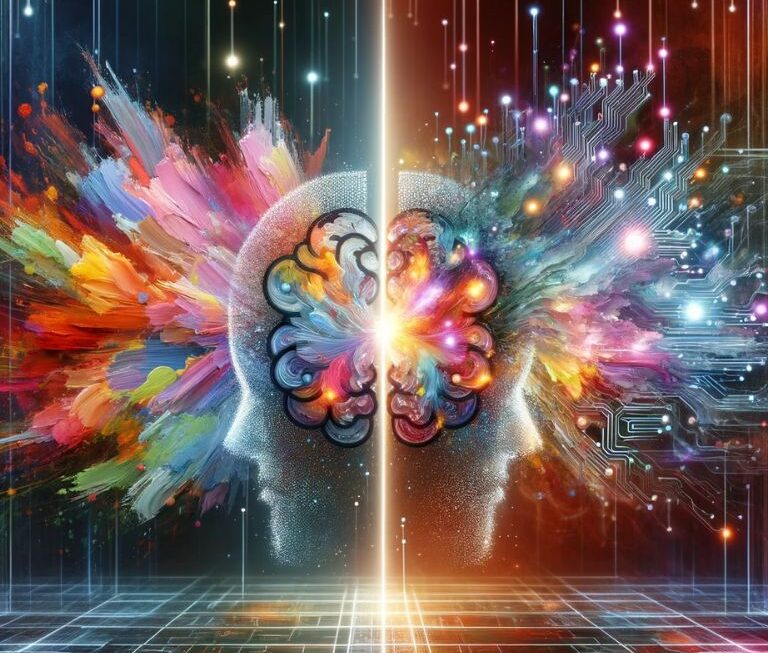Generative Artificial Intelligence (AI) represents a groundbreaking frontier in the realm of technology. At its core, generative AI refers to algorithms and models that can generate novel content, ranging from text and images to music and code, based on the data they’ve been trained on. This form of AI differs from traditional AI, which is typically geared towards understanding or interpreting data rather than creating new content.
A Brief History and Evolution of Generative AI
The Early Years: Foundations in Machine Learning
Generative AI’s roots trace back to the early developments in machine learning and neural networks. In the 1950s and 1960s, foundational work by pioneers like Alan Turing and Frank Rosenblatt laid the groundwork for understanding how machines could learn and adapt. These early models were simplistic compared to today’s standards, but they set the stage for the complex algorithms we see now.
The Rise of Deep Learning
The advent of deep learning in the 2000s marked a significant leap for generative AI. Deep learning involves neural networks with many layers (hence, ‘deep’) that can learn and make intelligent decisions. The introduction of architectures like Convolutional Neural Networks (CNNs) and Recurrent Neural Networks (RNNs) propelled the abilities of AI to not just analyze but also generate content.
The Breakthrough of Generative Models
In recent years, specific types of models like Generative Adversarial Networks (GANs) and Transformers have revolutionized what’s possible with AI. GANs, introduced by Ian Goodfellow and his colleagues in 2014, consist of two parts: a generator that creates images and a discriminator that evaluates them. This framework has enabled the creation of incredibly realistic images and videos. Transformers, on the other hand, have been pivotal in understanding and generating human language, with models like GPT (Generative Pre-trained Transformer) setting new benchmarks in natural language processing.
The Capabilities and Impact of Generative AI
Generative AI’s capabilities are vast and varied. Here are a few key areas where it has made a significant impact:
- Content Creation: AI can now generate artistic images, compose music, write articles, and even develop code, offering tools for creativity and efficiency.
- Data Augmentation: In fields like medical imaging, AI can generate realistic, anonymized images for training, ensuring better models without compromising patient privacy.
- Personalization: From personalized marketing to tailoring user experiences on websites and apps, AI’s ability to generate content specific to individual preferences is transforming customer engagement.
- Simulation and Modeling: In scientific research, AI models can simulate complex physical and biological processes, accelerating the pace of discovery.
Generative AI in Content Creation
How AI is Used in Art, Music, Writing, and Design
The use of generative AI in creative fields is a testament to its versatility and innovation. In the realm of art, AI algorithms can create visuals that range from surreal landscapes to abstract paintings, often blurring the lines between human and machine-made art. In music, AI systems like OpenAI’s Jukebox can compose songs in various genres, even mimicking the styles of specific artists. In the literary world, AI is used to write poetry, short stories, and even assist in novel writing, providing authors with new perspectives and ideas. In design, AI tools can generate logos, website layouts, and product designs, often in a fraction of the time it would take a human designer.
Examples of AI-Generated Content and Its Impact
- AI Art: Platforms like DeepArt and DALL-E have gained popularity for transforming simple sketches or descriptions into detailed artworks, showcasing AI’s ability to understand and interpret creative prompts.
- AI Music: Google’s Magenta project, which explores the role of AI in art and music, has developed tools that help create new musical compositions, offering new possibilities for composers and musicians.
- AI Writing: GPT-3, developed by OpenAI, has been used to write articles, poems, and even entire book chapters. Its ability to generate coherent and contextually relevant text has implications for journalism, literature, and content creation.
- AI in Film: AI has been used to script short films and even assist in editing, using predictive algorithms to suggest narrative structures and edit scenes.
- Product Design: AI-driven design tools are capable of generating thousands of variations of a product design, allowing companies to rapidly prototype and decide on the best option.
Automating Tasks with Generative AI

The Role of AI in Automating Routine Tasks
Generative AI is significantly enhancing the automation of routine tasks across various sectors. Here’s a look at some key areas:
- Data Entry and Processing: AI algorithms can automate the process of entering and processing large volumes of data, reducing errors and saving time.
- Customer Service: Chatbots and virtual assistants powered by AI can handle common customer queries, providing quick and efficient responses.
- Email Filtering and Response: AI systems can intelligently sort and prioritize emails and even draft responses, streamlining communication.
- Content Moderation: AI tools are increasingly used to monitor and moderate content on social media platforms, ensuring compliance with guidelines.
- Language Translation: AI-driven translation services have become more accurate, facilitating global communication and content accessibility.
Impact on Efficiency and Productivity in Various Industries
The integration of generative AI into routine task automation has brought about a significant shift in operational efficiency and productivity. In sectors like finance, AI-driven data analysis tools are streamlining complex processes, leading to quicker decision-making and reduced human error. The healthcare industry benefits from AI in processing patient data and managing records, allowing healthcare professionals to focus more on patient care. In retail, AI systems are used for inventory management and customer relationship management, optimizing the supply chain and enhancing customer experience.
Generative AI in Business and Marketing
Exploring AI’s Use in Data Analysis, Customer Service, and Personalized Marketing
Generative AI is revolutionizing the landscape of business and marketing, offering unprecedented tools for data analysis, customer service, and personalized marketing. In data analysis, AI algorithms are capable of processing and interpreting vast amounts of data to uncover valuable insights, driving strategic decision-making. In customer service, AI-powered chatbots and virtual assistants are providing 24/7 support, enhancing customer satisfaction and engagement. Personalized marketing has reached new heights with AI, enabling businesses to tailor marketing content to individual customer preferences and behaviors, significantly increasing the effectiveness of marketing campaigns.
Ethical Considerations and Challenges
Addressing the Ethical Dilemmas and Societal Impact of AI
The integration of generative AI into various aspects of society brings with it a range of ethical dilemmas and challenges:
- Autonomy vs. Control: Balancing the autonomy of AI systems with human oversight to prevent unintended consequences.
- Transparency: Ensuring the workings of AI algorithms are understandable and explainable to foster trust and accountability.
- Fairness and Equity: Addressing the risk of perpetuating biases and ensuring equitable access to AI technologies.
- Data Privacy and Security: Safeguarding the immense amounts of data AI systems handle against misuse and breaches.
- Ethical Use and Regulation: Establishing ethical guidelines and regulatory frameworks for the responsible use of AI.
Discussion on Privacy, Job Displacement, and AI Bias
Privacy concerns with generative AI are paramount as these systems often require access to vast datasets, including personal information. Ensuring that AI respects user privacy and adheres to data protection laws is crucial. Job displacement is another significant concern; as AI automates more tasks, there is a risk of job losses, particularly in roles that involve routine tasks. This necessitates a focus on retraining and reskilling workers to prepare them for an increasingly AI-integrated job market.
AI bias is a critical challenge. AI systems learn from data, and if this data is biased, the AI’s decisions and creations will likely be biased too. This can lead to unfair outcomes in areas like recruitment, law enforcement, and loan approvals. Addressing these issues requires a concerted effort in designing AI systems that are fair, transparent, and accountable, and in creating policies that protect individuals and society from potential negative impacts of AI.
Future Prospects of Generative AI
Predicting Future Trends and Developments in AI Technology
The trajectory of generative AI suggests an exciting and transformative future. Advancements in computational power and algorithmic efficiency are expected to make AI models more powerful and accessible. We are likely to see AI becoming increasingly adept at understanding and replicating human emotions and creativity, leading to more nuanced and sophisticated AI-generated content. The integration of AI in everyday devices and services will become more seamless, enhancing user experiences. Furthermore, the convergence of AI with other emerging technologies like quantum computing and blockchain could unlock new capabilities and applications, potentially revolutionizing entire industries.
Potential for AI in Solving Complex Global Challenges

Generative AI holds immense potential in addressing some of the world’s most pressing challenges:
- Climate Change: AI can aid in modeling climate scenarios, optimizing renewable energy systems, and developing new materials for carbon capture.
- Healthcare: AI has the potential to revolutionize healthcare through personalized medicine, drug discovery, and predicting disease outbreaks.
- Education: Tailored learning experiences and AI-driven educational tools can enhance learning outcomes and accessibility.
- Agriculture: AI can contribute to sustainable agriculture practices through precision farming, crop disease prediction, and resource optimization.
- Humanitarian Aid: AI can assist in disaster response, from predicting natural disasters to optimizing aid delivery and resource allocation.
Integrating AI into the Future
Generative AI’s role in modern innovation is undeniable, from its humble beginnings in neural networks to its current sophistication reshaping industries. It fosters a landscape where creativity and efficiency coexist, transcending boundaries. However, embracing these advances requires cautious handling of ethical and societal implications. Balancing AI’s power with human-centric values is essential. Generative AI’s promising horizon includes addressing global challenges and enhancing various aspects of life. As it evolves, it will catalyze innovation, uncover new pathways, and transform sectors. Collaboration among technologists, ethicists, policymakers, and the public is crucial for steering this powerful tool toward a future benefiting humanity. With thoughtful integration, generative AI represents progress, illuminating a path to a more intelligent, efficient, and creative world.




